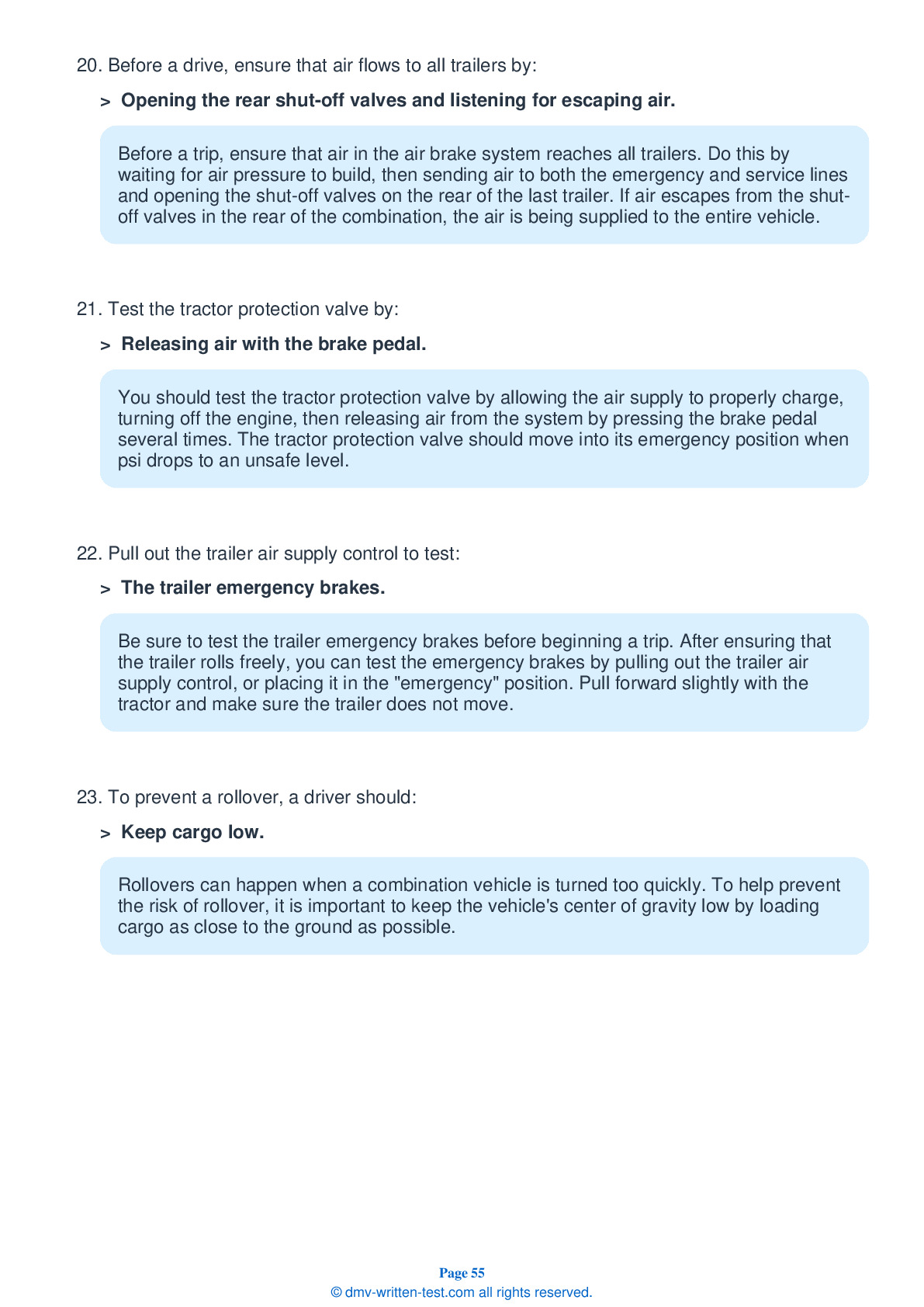Air Brakes
This endorsement is required for driving a vehicle with air brakes. To receive this endorsement, applicants must pass a written test. The test consists of 25 multiple choice questions. Each question has two, three or four possible answer choices. To pass, the applicant must answer at least 20 questions correctly. Test questions come from the Minnesota Commercial Driver’s Manual. Questions come from the chapters covering: Air Brakes and Combination Vehicles. The Air Brakes endorsement may be used with the Class A, B or C CDL.
Number of Question
Passing Score
7. When a combination vehicle goes around a corner:
Explanation
When a vehicle goes around a corner, the rear wheels follow a different path than the front wheels. This is called off-tracking. This effect is especially pronounced on vehicles with trailers.
8. All tractors and trailers must be equipped with ABS.
Explanation
Anti-Braking Systems (ABS) are required on vehicles, trailers, and dollies manufactured between 1997 and 1999, depending on the specific type of equipment.
9. When starting a vehicle with dual air brakes, pressure of ____ should be built up in the system before it is driven.
Explanation
Before driving a vehicle with a dual air brake system, allow time for the air compressor to build up pressure of at least 100 psi in both the primary and secondary systems.
10. Trailers built before 1975 are:
Explanation
Trailers built before 1975 are not required to have spring brakes. When parking a trailer without spring brakes, be sure to use wheel chocks to prevent the trailer from rolling.
11. Emergency brakes are:
Explanation
All trucks, truck tractors, and buses must be equipped with emergency brakes and parking brakes.
12. In a vehicle with dual parking control valves, once air pressure is lost and the spring brakes come on:
Explanation




